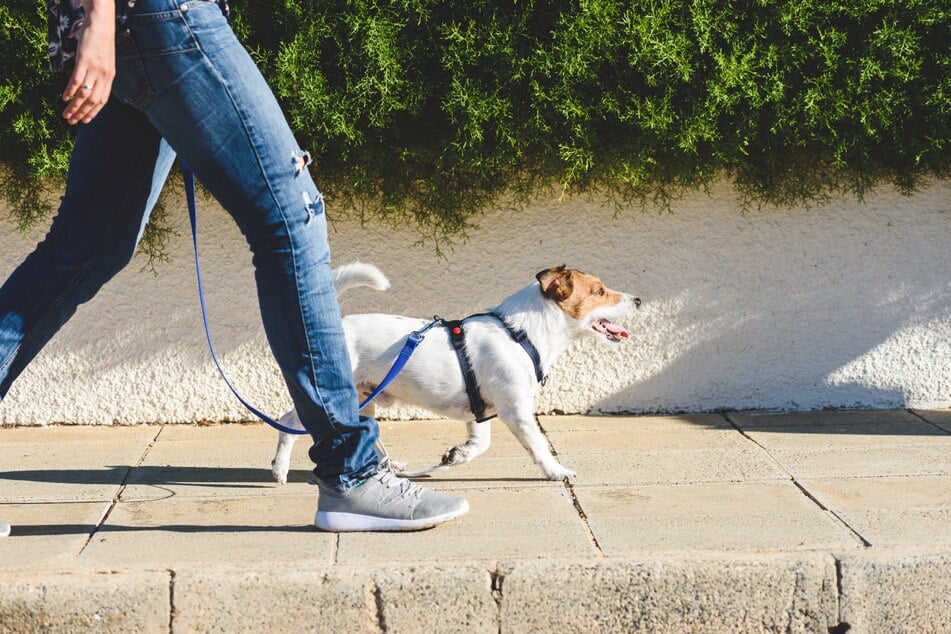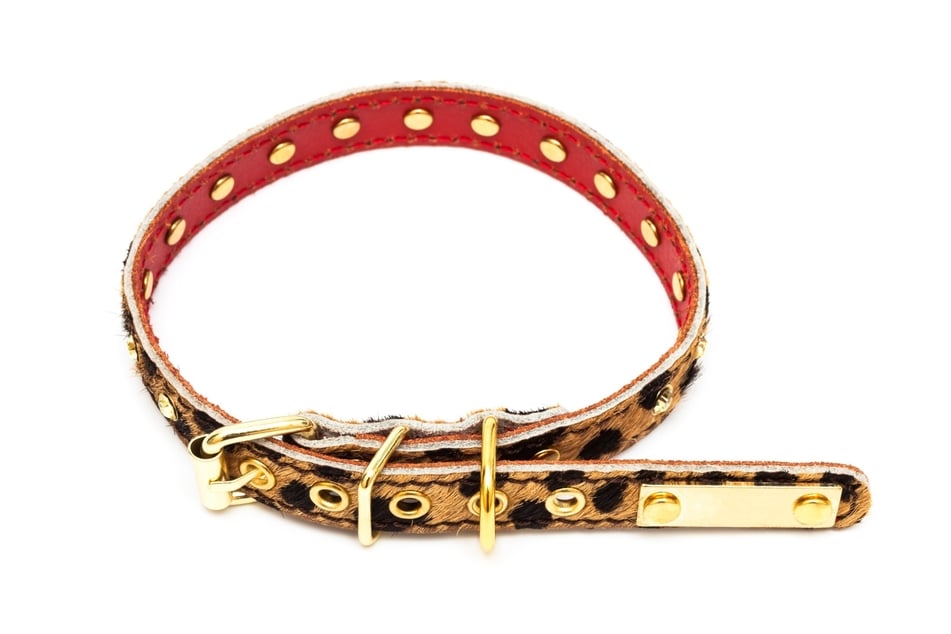A dog harness vs a collar: Which one is better for your pup?
There are many advantages and disadvantages to both dog collars and harnesses, and a lot to think about when taking your pooch for its daily walk. So, is a collar or harness better, and what are the pros and cons?

It can be a difficult decision, choosing between a harness or a collar for your dog, and one that should be made with care.
While both are a safe bet, and will allow you to attach a leash when you're out and about, there are a number of pros and cons to consider before making a decision.
Of course, your dog's weight, body size, and personality should play a decisive role in your decision between a dog harness vs a collar. You must get to know your dog before you can make a permanent choice, as the answer should be – to a certain extent – based on the pooch itself.
In this dog guide, we take you through the dog collars vs harness debate, and everything that you should know before making a decision.
Difference between a dog harness and collar
A dog collar, meant to be worn around the neck, is often compared to the humble harness. It makes sense: both of these devices are used for pretty much the same purpose, but there are some serious differences that need to be addressed if you are to be a true collar vs harness expert.
Here are the main differences between dog harnesses and collars:
- The collar offers an obvious and easy location for a name tag with contact information.
- Dog collars are generally more comfortable for your pooch, though it does somewhat depend on the dog's personal preferences.
- Collars are positioned around the neck, so they are far easier to adjust to the dog's neck size. Meanwhile, harnesses can be a more difficult fit.
- Harnesses provide the dog more freedom to move, especially around the neck.
Ultimately, harnesses provide a more secure and controlled tethering for your leash, while collars are a little more comfortable and easier to fit.
Dog collars: The pros and cons
Seeing as the collar sits around a dog's neck, it is important to know what you're doing if you choose to go down this route. This is one of the more sensitive areas of a dog's body, so there are a few things to keep in mind.
Here are the pros and cons of using a dog collar.

Advantages of collars for dogs
When properly used, collars offer a variety of advantages when you are walking your dog. In particular, collars are perfect for dogs that are well-trained and are capable of running free in the park.
1. Training: You should always train your dog with a leash attached to a collar, rather than a harness. It is easier to influence the dog when using a collar, and as a result, they will learn a lot faster.
2. Better communication: The use of a collar provides for far better communication between the owner and dog. As a result, this strengthens and deepens the bond and trust between the duo.
3. More freedom of movement: Dogs have far more freedom of movement when wearing a collar, and therefore are physically less restricted.
Disadvantages of collars for dogs
The most important thing to note about collars is that they can be seriously hazardous to a dog's health if not used correctly. In addition, collars make it easier for a dog to bite the leash.
1. Health consequences: If you place too much pressure on the neck when walking your dog, respiratory distress can set in, as the dog's air supply will be constricted by the collar around its neck. In addition, collars can reduce blood supply to the brain and cause long-term consequences. Don't put the collar on for too long or too tightly, and if your dog starts coughing or wheezing, take it off immediately.
2. Lack of security: Dogs can easily wriggle their way out of a collar, especially seeing as you don't want it to be too tight around the neck. In particular, this factor means that a collar is inappropriate for use in the car.
Warning: Never tug on a dog's collar. This can restrict their airflow and also hurt their neck.
Dog harness: The pros and cons
Dog harnesses are significantly safer than dog collars as they are not positioned around the neck of the pooch, where they could cause choking. That being said, they're not a perfect choice.
Here are the pros and cons of getting your dog a harness.

Advantages of harnesses for dogs
Harnesses are safer and less restrictive, as they do not sit around a dog's neck. In addition, they are less anxiety provoking and therefore more advisable for dogs who are smaller, fidgety, or anxious.
1. Health benefits: A harness will distribute pressure more evenly over the dog's body, so it is easier on the dog's neck and throat.
2. Control: It is easier to control a dog who is wearing a chest harness. As a result, harnesses are more suitable for dogs who tug on the leash and try to wriggle out of collars.
3. Safety: The harness is far safer for the dog when you yank on it, as it is not around the animal's neck. While you should never yank, if you find yourself in a dangerous situation, then you will be able to pull your dog to safety far easier.
4. Driving a car with a harness: When taking your dog in the car, you can use a harness to secure your dog safely. Again, a collar could cause strangulation if something goes wrong when the dog is in the car.
Disadvantages of harnesses for dogs
Now, yes, harnesses are safer than collars in many ways. That doesn't mean that they're perfect, though, as they do have a few disadvantages to consider.
1. Poorer communication: Collars are far better for communication than harnesses. This can be an obstacle for training and could potentially harm the quality of any dog-owner communication that takes place. A leash needs to be able to guide a dog's movement in training, and so for this function it is better to use a collar.
2. Not suitable for all breeds: Harnesses are often not suitable for very small dog breeds, as many of them can only be adjusted around the belly. This means that a much smaller dog, with a narrow chest, may not fit into a harness properly.
Hot tip: It isn't a bad idea to own both a collar and a harness, as they can serve different purposes. For training, a collar is certainly better, but a harness is preferable for long car trips and anxious dogs.
What to know when buying dog harnesses and collars

As we've discussed, there are many advantages and disadvantages to both dog harnesses and collars. Once you have made a decision, likely based on your dog's size and preferences, it's time to go out into the wild and make a purchase.
Here are some tips and tricks for buying dog collars and harnesses:
- Dog collars:
- The closing point must be secure and strong
- Try to use wider collars, as they are more comfortable for your pooch
- Make sure that it is adjustable, as your dog may change in size or change its preferences
- Dog harnesses:
- Shoulders and armpits should not get pinched by the straps
- The harness should not slip up towards the dog's head
- You should never purchase a harness without having it fitted to your dog first
Make sure to take your dog to the pet store with you when you go to pick up a collar or harness. Try it on the dog and make sure it is comfortable for your pooch before you buy it.
Dog harness or collar? Well, it depends on your pooch
When taking your perfect pooch for a lovely long walk, you want it to be comfortable, happy, and easily controllable. This is where the dog harness vs collar debate comes in, as your choice will determine how happy and controllable your doggo is.
When training, a dog should wear a collar, but a harness is more suitable for long walks or dogs who struggle with anxiety. As always, what's most important is that you know your dog really well, and make a decision according to its personality and preferences.
Cover photo: 123RF / Alexeitm





